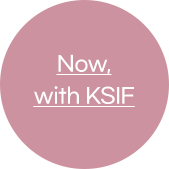

Expanding the Utility of Korean Language
and Culture Education through Public Domain
Content An Interview with Kim Ah-young,
Senior Official, Public Content Team,
Korea Culture Information Service Agency
The KSIF has participated for two consecutive years in the Copyright Clearance Support Project for Digital Release of Public Domain Content operated by the Korea Culture Information Service Agency. Recently, KSIF produced and released 115 photographs of Korean culture as public domain content, available for use by Korean language teachers and education professionals around the world. In this interview, we spoke with Kim Ah-young, Senior Official from the Public Domain Content Team at the Korea Culture Information Service Agency, who is overseeing the project. She shared insights on the project’s objectives, its implementation process, collaboration with KSIF, and the significance of public domain content in the era of artificial intelligence (AI).
Hello, Ms. Kim Ah-young. Thank you for joining us for this interview. To begin, could you briefly introduce yourself and the Korea Culture Information Service Agency to our Monthly Knock Knock readers?
Hello. I’m Kim Ah-young, and I joined the Korea Culture Information Service Agency in 2024. Before joining KCISA, I worked at another public institution under the Ministry of Culture, Sports and Tourism—specifically, the KSIF. It was during the height of the COVID-19 pandemic, which came with many challenges, but I found the work rewarding thanks to the high level of interest in learning Korean and the global enthusiasm for K-culture. I’m still close with many of the colleagues I worked with at that time, and I believe those continued relationships are contributing to the smooth collaboration between our organizations, now in its second consecutive year.
The Korea Culture Information Service Agency (KCISA) is a public institution under the Ministry of Culture, Sports and Tourism, responsible for leading the digitalization of culture. It operates the Internet Data Center (IDC), which provides integrated support for websites managed by the Ministry and its affiliated institutions. Some of our major projects include operating the “Culture Portal,” a comprehensive cultural information platform that provides public-sector information on cultural industries, tourism, and sports. We also produce video content through the “Culture PD Project,” which delivers cultural information and updates on digital technologies. In addition, we collect and manage data for the cultural expense tax deduction system, and oversee the management of the curation robot Q.I., which is available at institutions such as the National Museum of Korea and the National Museum of Modern and Contemporary Art.
Among these efforts, the Public Domain Content Team is responsible for managing and promoting the use of public domain content—intellectual property owned by the state or local governments. We operate KOGL (Korea Open Government License), a platform where the public can freely access and use public domain content. We also oversee the management of entrusted copyrighted materials and provide on-site educational visits to public institutions and their staff.
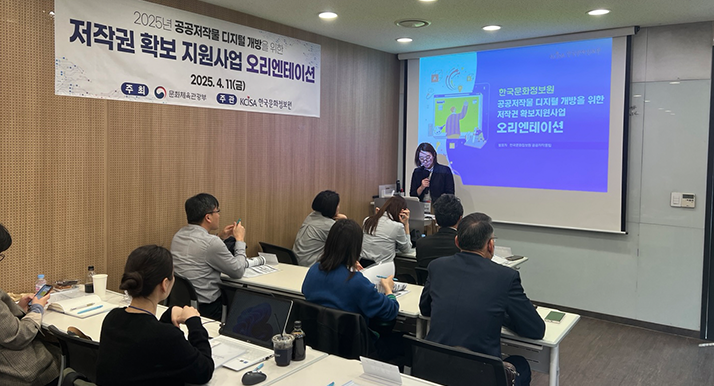 Kim Ah-young, Senior Official, Public Domain Content Team at the Korea Culture Information Service Agency, conducting an orientation for the 2025 Copyright Clearance Support Project for Digital Release of Public Domain Content
Kim Ah-young, Senior Official, Public Domain Content Team at the Korea Culture Information Service Agency, conducting an orientation for the 2025 Copyright Clearance Support Project for Digital Release of Public Domain Content
Could you give us a detailed explanation of the Copyright Clearance Support Project for Digital Release of Public Domain Content that you are currently overseeing?
The Copyright Clearance Support Project for Digital Release of Public Domain Content, operated by the Korea Culture Information Service Agency (KCISA), involves reviewing the copyright status of content held by public institutions. The project provides support for opening access to high-quality content that institutions wish to make public but have been unable to due to uncertain copyright status. It also examines content that may already be publicly available but could have underlying copyright issues. These reviews are conducted in collaboration with legal experts, and the process includes examining portrait rights, consent for use, and transfer of usage rights.
Additionally, the project offers consulting on copyright management and contract templates to help institutions prevent future copyright issues. Last year, for example, we provided original photographs for educational materials to ensure there were no copyright problems. This year, after completing copyright clearance, we plan to support additional steps such as data labeling so that approved content may also be used as AI (artificial intelligence) training data. All high-quality content with resolved copyright issues is ultimately made available to the public through KOGL (Korea Open Government License) and institutional websites, allowing free use under specified conditions.
Could you explain the process by which the public domain content recently produced and released in collaboration with KSIF were created? We’re also curious about the key outcomes of this initiative.
We reviewed the copyrights of photographs previously used by KSIF for Korean cultural education, and we found that many had unclear sources—or, even when the sources were clear, they were classified under KOGL Type 4, which imposes restrictions on use. Since KSIF needed copyright-free images for the publication of new cultural textbooks, we worked with KCISA and professional documentary photographers to newly capture high-quality images. These newly taken photographs—of landmarks such as Gwanghwamun, Changdeokgung Palace, and Bukchon Hanok Village—were shot in high resolution from various angles and are now freely downloadable without copyright concerns. We expect they will be highly useful not only as materials for cultural education but also for tourism promotion.
Photographs of Korean culture produced and released as public domain content through collaboration between KSIF and KCISA
(From left) Rear Garden of Changdeokgung Palace, Namsan Seoul Tower
Source: Nuri KSI, KOGL
Many readers may be unfamiliar with the term KOGL type. Could you explain the differences between KOGL Type 1, Type 4, and the others?
KOGL (Korea Open Government License) is divided into four types, each with its own usage conditions and scope. Type 1 is the most flexible, allowing users to freely use the public domain content for both commercial and non-commercial purposes, as well as to create and utilize derivative works. Type 2 permits free use and the creation of derivative works, but prohibits commercial use. Type 3 allows use regardless of commercial intent but does not permit any modifications or creation of derivative content. Type 4 is the most restrictive, allowing free use only for non-commercial purposes and prohibiting any modifications, including derivative works. When a public domain content is labeled with a KOGL type, users may utilize it in accordance with the specified conditions without needing separate permission from the providing institution, as long as the institution name and author are properly cited.
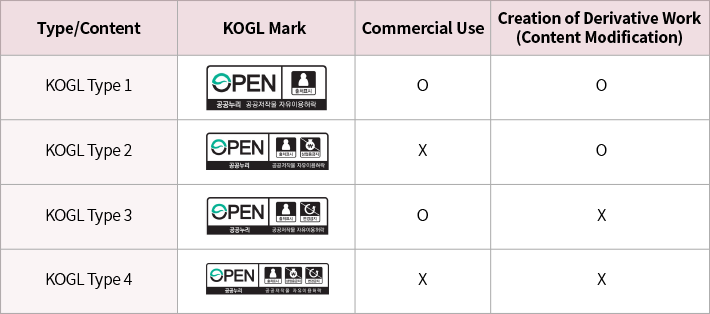 KOGL’s Four Types: Usage Conditions and Scope of Use
KOGL’s Four Types: Usage Conditions and Scope of Use
What is your top priority when opening access to public domain content?
Since many public domain content are created through contracts with external vendors, reviewing the contract is the highest priority. We first check whether the contract specifies who owns the intellectual property rights and the rights to create derivative works. If no issues arise during this stage, the institution typically retains copyright. However, under Article 24-2 of the Copyright Act, content may be restricted from use if it involves matters such as national security, personal privacy, or trade secrets. Therefore, we also examine whether the content includes portrait rights or personal information. Only after confirming there are no such issues do we proceed with releasing the content.
Outside of your collaboration with KSIF, how is the Copyright Clearance Support Project for Digital Release of Public Domain Content being utilized on the ground?
In 2024, in addition to the collaboration with KSIF, we also carried out a public domain content release project with Jinju City. Together, we produced high-resolution photo resources by filming major landmarks in Jinju using drones. Photographs of Jinju Fortress, Chokseokru Pavilion, and Jinyangho Park will be made available through the KOGL website and the Jinju City tourism information site.
Moreover, fonts labeled for safe public use and uploaded to KOGL by various institutions are now integrated into web-based design tools like Miri Canvas and document software such as Hancom Office (Hangul). On the design and video tool MangoBoard, both fonts and photo-based public domain content are available for use. Currently, we are also in discussions with Adobe to integrate these trusted fonts into their software programs.
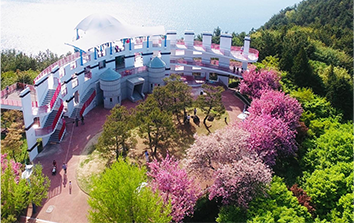
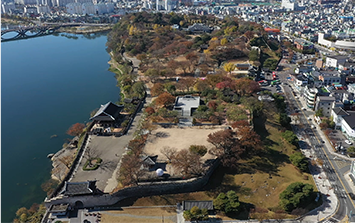
Public domain content photo materials jointly produced by the Korea Culture Information Service Agency and Jinju City, Gyeongsangnam-do
(From left) Jinyangho Observatory, Jinju Fortress
Source: KOGL
As the use of digital technologies such as AI (Artificial Intelligence) continues to expand, the importance of open access to public domain content in digital form is also growing. What direction do you hope this project will take in the future?
As the use of AI becomes more widespread, the need for reliable data for training purposes is becoming increasingly evident. Materials produced by public institutions are generally suitable for use as training data and can be freely utilized, but there is still room for legal debate. Questions remain about whether AI was trained without the copyright holder’s consent, whether traces of the original work remain in the generated output, and ultimately, whether the training process itself constitutes copyright infringement. While some countries view AI training as “fair use,” Korea currently lacks clear legal standards on the matter.
This year marks the first time that the Public Domain Content Team at the Korea Culture Information Service Agency (KCISA) has incorporated AI training data labeling into its project. In the long term, I hope that high-quality data produced by public institutions will be opened to the public through proper copyright verification, and that this will help establish standards for distinguishing between data that can and cannot be used for AI training.
Finally, do you have a message for the readers of Monthly Knock Knock, especially Korean language educators around the world and those interested in Korean cultural content who may make use of these public domain content?
The high-quality cultural photographs produced through last year’s project were a meaningful and rewarding achievement for our organization. This year, since the KSIF represents the leading global brand for Korean language education abroad, we anticipate the release of even higher-quality materials that can also be used as valuable AI training data.
The KOGL (Korea Open Government License) website operated by KCISA offers a wide variety of freely usable, copyright-cleared resources—not only from KSIF but also from local governments and public institutions throughout Korea. We hope educators will make active use of these materials. We will also continue working to release more AI training data that supports Korean language learning, so we ask for your continued interest and use.